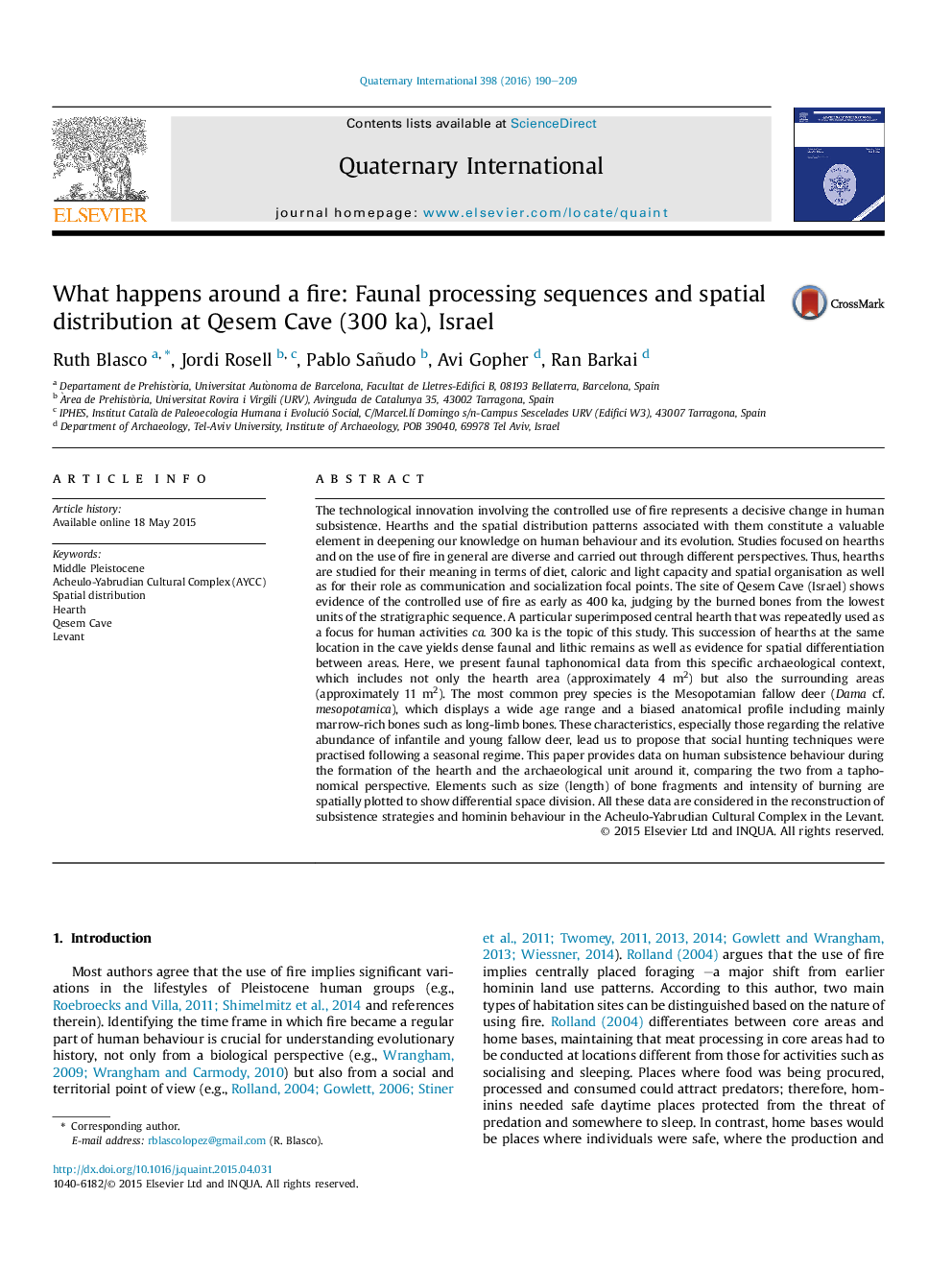| کد مقاله | کد نشریه | سال انتشار | مقاله انگلیسی | نسخه تمام متن |
|---|---|---|---|---|
| 1040294 | 1484100 | 2016 | 20 صفحه PDF | دانلود رایگان |
عنوان انگلیسی مقاله ISI
What happens around a fire: Faunal processing sequences and spatial distribution at Qesem Cave (300Â ka), Israel
دانلود مقاله + سفارش ترجمه
دانلود مقاله ISI انگلیسی
رایگان برای ایرانیان
کلمات کلیدی
موضوعات مرتبط
مهندسی و علوم پایه
علوم زمین و سیارات
زمین شناسی
پیش نمایش صفحه اول مقاله

چکیده انگلیسی
The technological innovation involving the controlled use of fire represents a decisive change in human subsistence. Hearths and the spatial distribution patterns associated with them constitute a valuable element in deepening our knowledge on human behaviour and its evolution. Studies focused on hearths and on the use of fire in general are diverse and carried out through different perspectives. Thus, hearths are studied for their meaning in terms of diet, caloric and light capacity and spatial organisation as well as for their role as communication and socialization focal points. The site of Qesem Cave (Israel) shows evidence of the controlled use of fire as early as 400Â ka, judging by the burned bones from the lowest units of the stratigraphic sequence. A particular superimposed central hearth that was repeatedly used as a focus for human activities ca. 300Â ka is the topic of this study. This succession of hearths at the same location in the cave yields dense faunal and lithic remains as well as evidence for spatial differentiation between areas. Here, we present faunal taphonomical data from this specific archaeological context, which includes not only the hearth area (approximately 4Â m2) but also the surrounding areas (approximately 11Â m2). The most common prey species is the Mesopotamian fallow deer (Dama cf. mesopotamica), which displays a wide age range and a biased anatomical profile including mainly marrow-rich bones such as long-limb bones. These characteristics, especially those regarding the relative abundance of infantile and young fallow deer, lead us to propose that social hunting techniques were practised following a seasonal regime. This paper provides data on human subsistence behaviour during the formation of the hearth and the archaeological unit around it, comparing the two from a taphonomical perspective. Elements such as size (length) of bone fragments and intensity of burning are spatially plotted to show differential space division. All these data are considered in the reconstruction of subsistence strategies and hominin behaviour in the Acheulo-Yabrudian Cultural Complex in the Levant.
ناشر
Database: Elsevier - ScienceDirect (ساینس دایرکت)
Journal: Quaternary International - Volume 398, 4 April 2016, Pages 190-209
Journal: Quaternary International - Volume 398, 4 April 2016, Pages 190-209
نویسندگان
Ruth Blasco, Jordi Rosell, Pablo Sañudo, Avi Gopher, Ran Barkai,